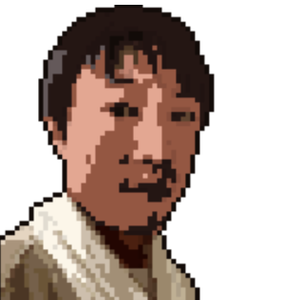Section C
Directions: There are 2 passages in this section. Each passage is followed by some questions or unfinished statements. For each of them there are four choices marked A), B), C) and D). You should decide on the best choice and mark the corresponding letter on Answer Sheet 2 with a single line through the centre.
Passage One
Questions 46 to 50 are based on the following passage.
When is cleaning walls a crime? When you're doing it to create art, obviously. A number of street artists around the world have started expressing themselves through a practice known as reverse graffiti (涂鸦). They find dirty surfaces and paint them with images or messages using cleaning brushes or pressure hoses (高压水管). Either way, it's the same principle: the image is made by cleaning away the dirt. Each artist has their own individual style but all artists share a common aim: to draw attention to the pollution in our cities. The UK's Paul Curtis, better known as Moose, operates around Leeds and London and has been commissioned by a number of companies to make reverse graffiti advertisements.
Brazilian artist, Alexandre Orion, turned one of Sao Paulo's transport tunnels into an amazing wall painting in 2006 by getting rid of the dirt. Made up of a series of white skulls (颅骨), the painting reminds drivers of the effect their pollution is having on the planet. “Every motorist sits in the comfort of their car, but they don't give any consideration to the price their comfort has for the environment and consequently for themselves,” says Orion.
The anti-pollution message of the reverse graffiti artists confuses city authorities since the main argument against graffiti is that it spoils the appearance of both types of property: public and private. This was what Leeds City Council said about Moose's work: “Leeds residents want to live in clean and attractive neighbourhoods. We view this kind of advertising as environmental damage and will take strong action against it.” Moose was ordered to “clean up his act.” How was he supposed to do this: by making all property he had cleaned dirty again?
As for the Brazilian artist's work, the authorities were annoyed but could find nothing to charge him with. They had no other option but to clean the tunnel—but only the parts Alexandre had already cleaned. The artist merely continued his campaign on the other side. The city officials then decided to take drastic action. They not only cleaned the whole tunnel but every tunnel in Sao Paulo.
46 什么时候清洁墙壁属于犯罪?显然,当你这样做是为了创作艺术的时候。世界各地的许多街头艺术家已经开始通过一种被称为“反向涂鸦”的行为来表达自己。他们找到肮脏的墙面,用清洁刷或高压水管在上面描绘出图画或信息。无论用哪种方式,都遵循同样的准则:通过清除灰尘来创作图像。每位艺术家都有自己的风格,但 47 所有的艺术家都有一个共同的目标:引起人们对我们城市污染的关注。英国的保罗·柯蒂斯,更广为人知的名字是穆斯,多在利兹市和伦敦市进行涂鸦,他已经受到许多公司的委托,绘制反向涂鸦广告。
48 巴西艺术家亚历山大·奥莱恩在2006年通过清除灰尘,将圣保罗的一条交通隧道变成了惊人的壁画。这幅画由一系列白色头骨组成,让汽车驾驶员想起了他们的污染对地球所造成的影响。奥莱恩说:“每位驾驶者都舒适地坐在汽车里,但他们并没有考虑到这种舒适对环境来说要付出的代价,自然也没有考虑到对其自身来说要付出的代价。”
反向涂鸦艺术家们所传递的反污染的信息使市政当局感到困惑,其反对涂鸦的主要理由是,两种类型的房产外观都被它破坏了:公共房产和私人房产。这就是利兹市议会对穆斯作品的评价:“利兹居民想住在干净优美的街区中。我们将这种广告视为对环境的破坏,并将对此采取强有力措施加以打击。” 49 穆斯被责令“清理他的作品”。 他应该怎么做呢?将他已经清理干净的所有房产再变脏吗?
至于那位巴西艺术家的作品,当局虽然很生气,但找不到任何罪名可以指控他。他们别无选择,只能清洁隧道——但只清洗了亚历山大已经清洗过的那部分。只不过,这位艺术家在另一边继续了他的抗议活动(继续涂鸦创作)。 50 市政官员随后决定采取严厉行动。他们不仅清洁了整个隧道,还清洁了圣保罗的每条隧道。
- 46
- 单选题
- 分值:14.2
What do we learn from the passage about reverse graffiti?
46.关于反向涂鸦,我们从文章中了解到了什么?
A)它使用涂料来创作反污染的图像。
B)它给当地居民带来很多麻烦。
C)它导致许多驾驶员分心。
D)它将肮脏的墙壁变成了艺术作品。
- 47
- 单选题
- 分值:14.2
What do reverse graffiti artists try to do?
47.反向涂鸦艺术家们试图做什么?
A)宣传他们的艺术追求。
B)美化城市环境。
C)提高公众对环境污染的意识。
D)表达他们对地方政府的不满。
- 48
- 单选题
- 分值:14.2
What do we learn about Brazilian artist Alexandre Orion?
48.关于巴西艺术家亚历山大·奥莱恩,我们了解到了什么?
A)他擅长画白色头骨。
B)他选择隧道来进行他的涂鸦艺术。
C)他建议禁止所有会造成污染的汽车。
D)他喜欢创作有创造力的艺术作品。
- 49
- 单选题
- 分值:14.2
What does the author imply about Leeds City Council's decision?
49.关于利兹市议会的决定,作者暗示了什么?
A)它简直荒谬。
B)它信息量大。
C)它相当出人意料。
D)它很明智。
- 50
- 单选题
- 分值:14.2
How did Sao Paulo city officials handle Alexandre Orion's reverse graffiti?
50.圣保罗市的官员是如何处理亚历山大·奥莱恩的反向涂鸦的?
A)他们让他清洁圣保罗的所有隧道。
B)他们采取了严厉的行动,禁止所有反向涂鸦。
C)他们以他在城市中污染了隧道的罪名来指控他。
D)他们使他无法实践他的艺术。
留言数:0



